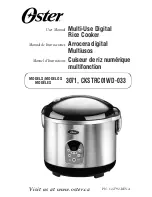
50
Up to a static height of 10 m, the capacity pressure expansion vessel is dependent on the
water capacity of the system as follows:
Water content
Vessel size
Litre
Litre
up to 111
12
112 - 167
18
168 - 231
25
232 - 324
35
325 - 463 50
464 - 741
80
There should no manually operable shut off valves installed between the expansion vessel
and the stove.
A ventilation section at least 0.5 m above the highest circulation point in closed systems
with a diameter of at least 1
″
should be arranged and a ventilation valve provided at the
upper end.
In gravity systems the rise and fall of horizontal pipes should be at least 0.5 cm/m.
Radiators with more than 25 ribs or plate heat exchangers over 1.5 m long should be di-
agonally connected to the flow and return pipes.
Where there is a lower distribution ventilating valve it must be provided on each radiator.
The radiators should not be inclined towards the ventilation. As radiators are usually at the
same level on the floor where the stove is installed, these radiators should all be connected
to a circulating pump as matter of course.
If however a pure gravity plant has to be executed without pumps, then the centre of the
radiator should not be lower than the centre of the boiler.
In the simplest installation case, the circulation pump is connected to the mains by a switch
and runs continuously during the heating period, while the water capacity of the stove is
regulated by an integrated temperature controller.
The pumps can however also be controlled from a maximum-thermostat in the domestic
water boiler, to ensure a minimum temperature for the domestic hot water.
It is also possible to switch the circulating pumps through a room thermostat. In this case
however the gravity circulating domestic water boiler should not have a capacity of less
than 260 l, if there are no other radiators on gravity circulation are connected.
Independently of the control types described above, the heating circulation and/or boiler
loading pump should primarily be controlled through a thermostat with a fixed switch on
temperature of between 50 and 55 °C, situated immediately at the stove's return flow con-
nection following an adjustable bypass close to the stove between the flow and return
lines, to avoid a low temperature operation of the stove boiler.
In the installation unit which can be supplied as an accessory there is a thermal boiler
monitor integrated as a continuous regulating valve. The pump controls mentioned above
are then not needed.
Summary of Contents for K148
Page 4: ...4 Ger teaufbau K148F K148...
Page 26: ...26 Bild 10 Bild 11 Bild 12 Bild 15 Bild 13 Bild 14 Bild 16 Bild 17 Bild 18...
Page 27: ...27 Bild 20 Bild 21 Bild 22 Bild 23 Bild 24 Bild 25 Bild 27 Bild 26 Bild 28...
Page 31: ...31...
Page 32: ...32...
Page 33: ...33...
Page 36: ...36 Assembly K148F K148...
Page 57: ...57 Fig 10 Fig 11 Fig 12 Fig 15 Fig 13 Fig 14 Fig 16 Fig 17 Fig 18...
Page 58: ...58 Fig 20 Fig 21 Fig 22 Fig 23 Fig 24 Fig 25 Fig 27 Fig 26 Fig 28...
Page 59: ...____________________________________________________________ 59 Fig 31 Fig 30 Fig 29...
Page 64: ...64 Structure de l appareil K148F K148...
Page 84: ...84 Image 10 Image 11 Image 12 Image 15 Image 13 Image 14 Image 16 Image 17 Image 18...
Page 85: ...85 Image 20 Image 21 Image 22 Image 23 Image 24 Image 25 Image 27 Image 26 Image 28...
Page 86: ...____________________________________________________________ 86 Image 31 Image 30 Image 29...
Page 92: ...92 Struttura dell apparecchio K148F K148...
Page 115: ...115 Fig 10 Fig 11 Fig 12 Fig 15 Fig 13 Fig 14 Fig 16 Fig 17 Fig 18...
Page 116: ...116 Fig 20 Fig 21 Fig 22 Fig 23 Fig 24 Fig 25 Fig 27 Fig 26 Fig 28...
Page 117: ...____________________________________________________________ 117 Fig 31 Fig 30 Fig 29...
















































